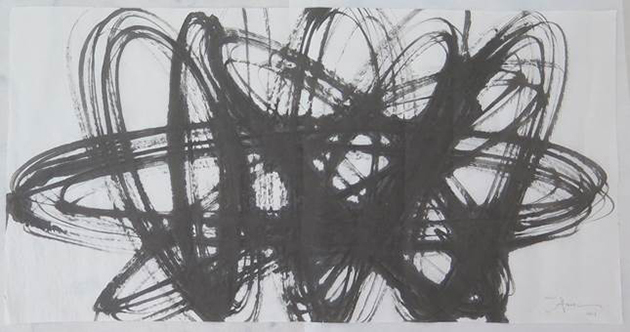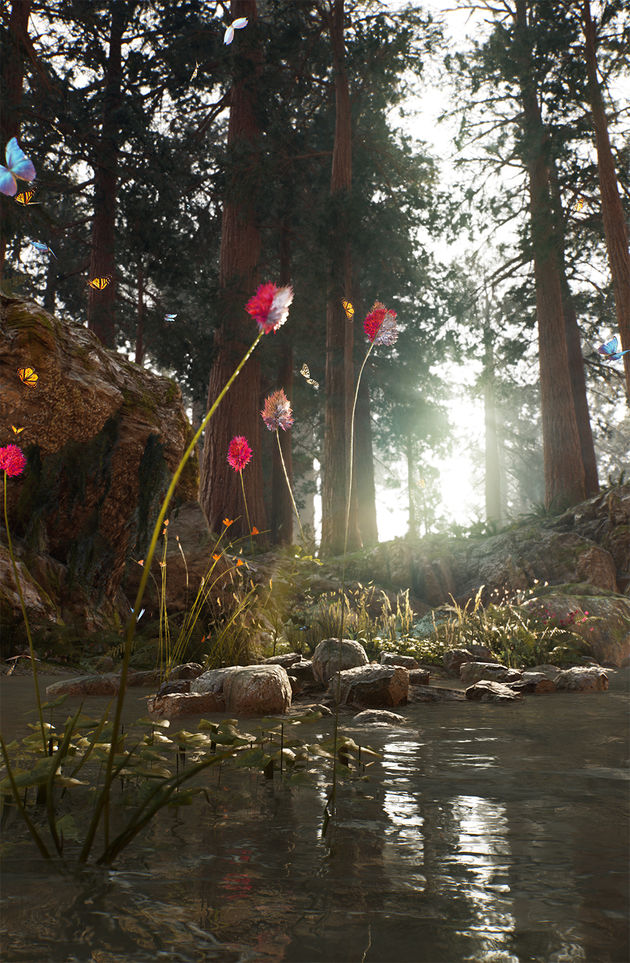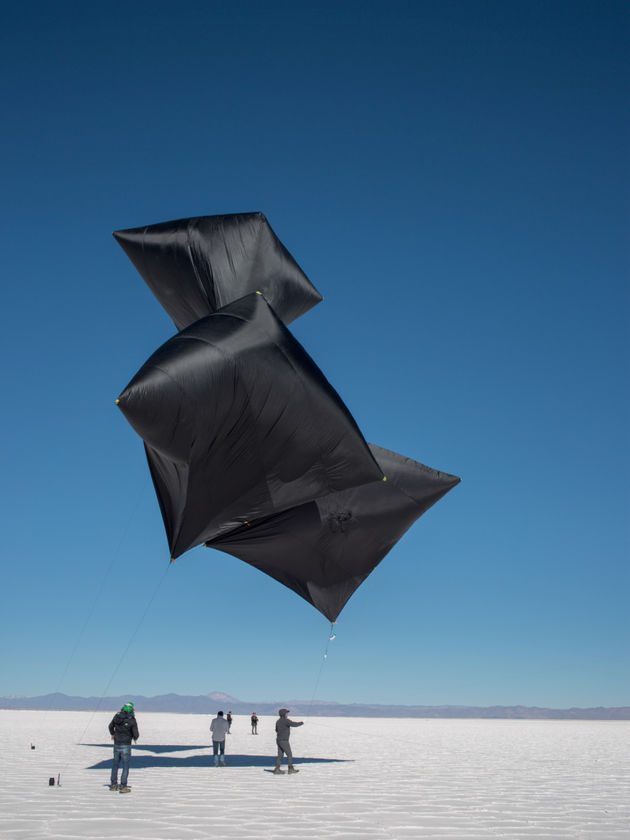 BTS, K-Pop superstars and patrons of the arts. All images and photos courtesy of Connect, BTS and their respective artists.
BTS, K-Pop superstars and patrons of the arts. All images and photos courtesy of Connect, BTS and their respective artists.
Connect, BTS is a series of artworks spanning the globe supported by one of South Korea’s most popular bands. It has the potential to bring art and pop back together, writes Priya Khanchandani
On Tuesday, a perhaps unlikely combination of artists and curators gathered at the Serpentine in London to launch a high-profile project. The likes of Antony Gormley, Tomas Saraceno and Hans Ulrich Obrist were there representing the traditional visual art establishment, but with the unusual addition of the superstar Korean pop band BTS.
Obrist introduced the participants of the project – titled ‘Connect, BTS’ – and then went on to exchange a few words with the band, who are the main patrons of the project, via a live video link. Highlighting the significant platform their involvement has given to the initiative, Obrist acknowledged that ‘there has of course been a great deal of speculation among the millions and millions of fans of BTS about Connect, BTS.’
Connect, BTS soon began to trend on social media. It was apparent to those present that this was more likely down to the fame of the band than anything else, despite the project involving some of the best-known living visual artists. This was corroborated by the Korean curator leading the project, Daehung Lee, that BTS’ significance in shaping contemporary culture cannot be ignored. ‘BTS has become a global group worth noting among global contemporary artists,’ he said. He also highlighted their ‘diverse responses to the world around us,’ and ‘support for diversity, and love and care for their periphery,’ as being central to the artists’ approach to the project. Although the band has not shaped the project artistically, their ethos is bound to shape its perception and understanding, given the sheer extent of their visibility.
 Gormley’s installation will be based on his long-running Clearing Series. Pictured above: Clearing LXX, 2019
Gormley’s installation will be based on his long-running Clearing Series. Pictured above: Clearing LXX, 2019
The project comprises a series of installations and exhibitions across five countries, which open in stages from January onwards, by artists such as Antony Gormley, Tomas Saraceno and Ann Veronica Janssens. Gormley’s contribution, titled New York Clearing, will be displayed beside the East River in Brooklyn. The installation, which he described as ‘a meditation on an object in space’, is made from a single 18km line of square aluminium tubing that loops and coils, akin to an exhibit included in his recent Royal Academy show comprising ‘only’ 7km of metal rod. Meanwhile Saraceno’s Fly with Aerocene Pacha will, he says, showcase a way of enabling a human being to float into the sky powered only by the sun and air.
The Serpentine launched the London iteration of BTS, Connect: a new digital installation by Jakob Kudsk Steensen, who told me he was (pleasantly) surprised when he realised that his Instagram had gained 1000 followers within minutes of the launch that day. Titled Catharsis, it responds to the natural world against a backdrop of anthropogenic climate change by taking the viewer on a journey through a digital simulation of an ‘old-growth forest’ – a forest that has developed naturally, undisturbed over hundreds of years.
 Steensen’s Catharsis (2020) will be exhibited at the Serpentine Gallery in London.
Steensen’s Catharsis (2020) will be exhibited at the Serpentine Gallery in London.
This work is based on extensive field work carried out by Steensen and his collaborator Matt McCorkle, involving a process he describes as ‘archiving’ the natural world. ‘I create libraries of plants, trees, animals that I 3D scan,’ he says. ‘I go to all these places and I collect them. It’s been a continuous practice over ten years.’ His archive of imaging, edited together to create a film, is combined with synchronised audio gathered from several North American forests by McCorkle. Through the world of textures and sounds they have created, audiences are encouraged to redefine their relationship with nature.
During the conversation with Obrist, members of the band hinted at the huge platform that enables them to be a vehicle to engage broad audiences with visual art. ‘As we connect this together,’ one BTS member said, ‘I hope more and more people will believe in the power of art, that it can help and change the world.’ The band – made up of SUGA, J-Hope, Jungkook, Jin, Jimin, RM and V – has a colossal following of tens of millions, known as the BTS Army. The degree to which these audiences will engage with this visual art project in a genuine way and beyond its alliance with BTS, remains to be seen.
 Saraceno’s Aerocene Backpack (2016), a new version of which will be unveiled as part of BTS, Connect.
Saraceno’s Aerocene Backpack (2016), a new version of which will be unveiled as part of BTS, Connect.
However, BTS are not just any other arts patron, and at a time when the politics of arts patronage is centre stage, their involvement is bound to be scrutinised. Should it be celebrated? So far, despite the apparent gulf between the worlds of BTS and the Serpentine, it is impossible to deny that it opens up the notion of popular culture becoming a stronger patron of the arts. Given the extent to which the band’s involvement has raised the profile of this project already, if handled carefully, it has the potential to give rise to the most ground-breaking alliance between pop and art since the Pop Art movement.
Connect, BTS will showcase the work of 22 contemporary artists in London, Berlin, Buenos Aires, New York and Seoul until March 2020. Catharsis by Jakob Kudsk Steensen is available to view online at catharsis.live and is showing at Chucs, Serpentine Galleries, London, from 14 September then as an outdoor installation from 28 January.
















